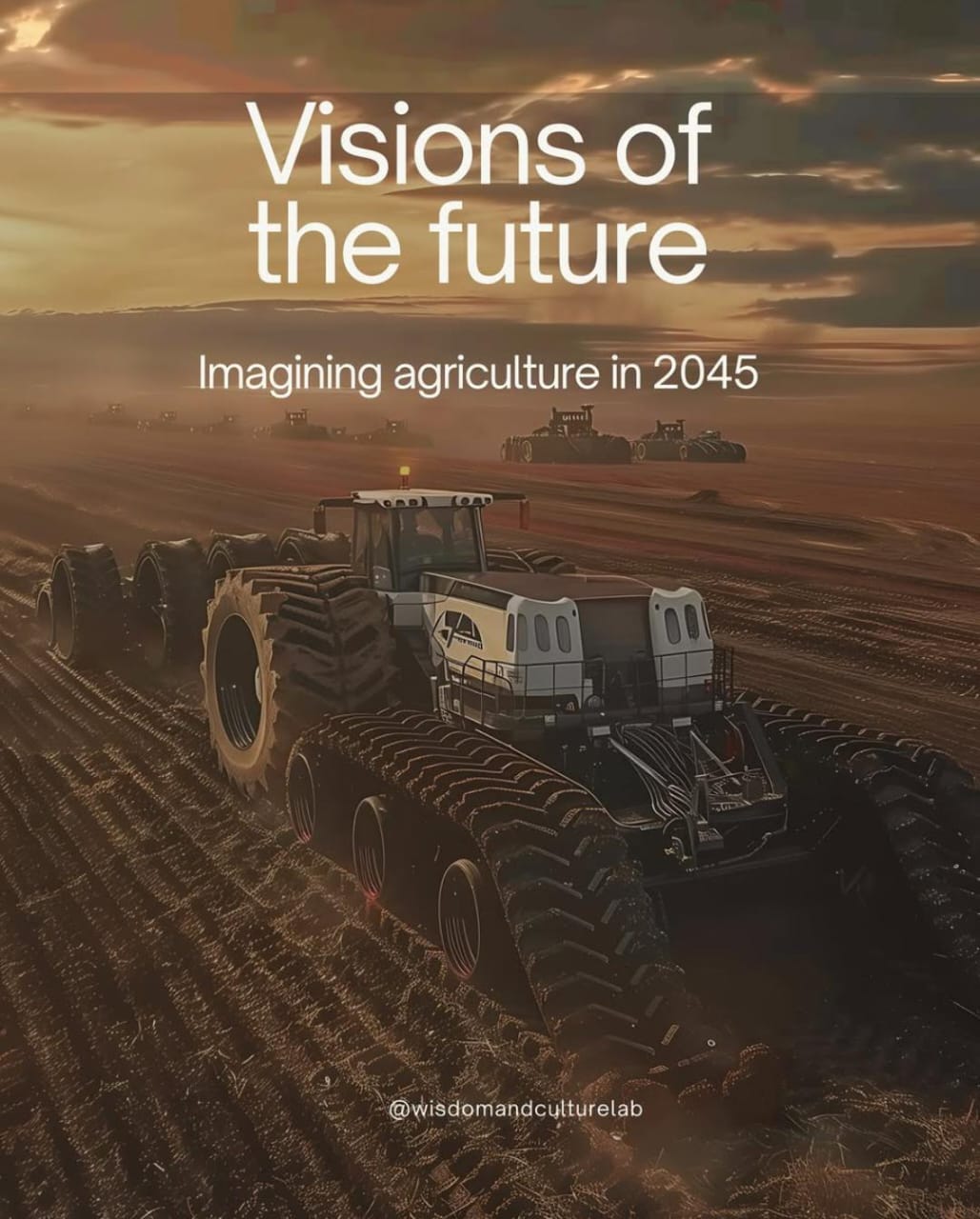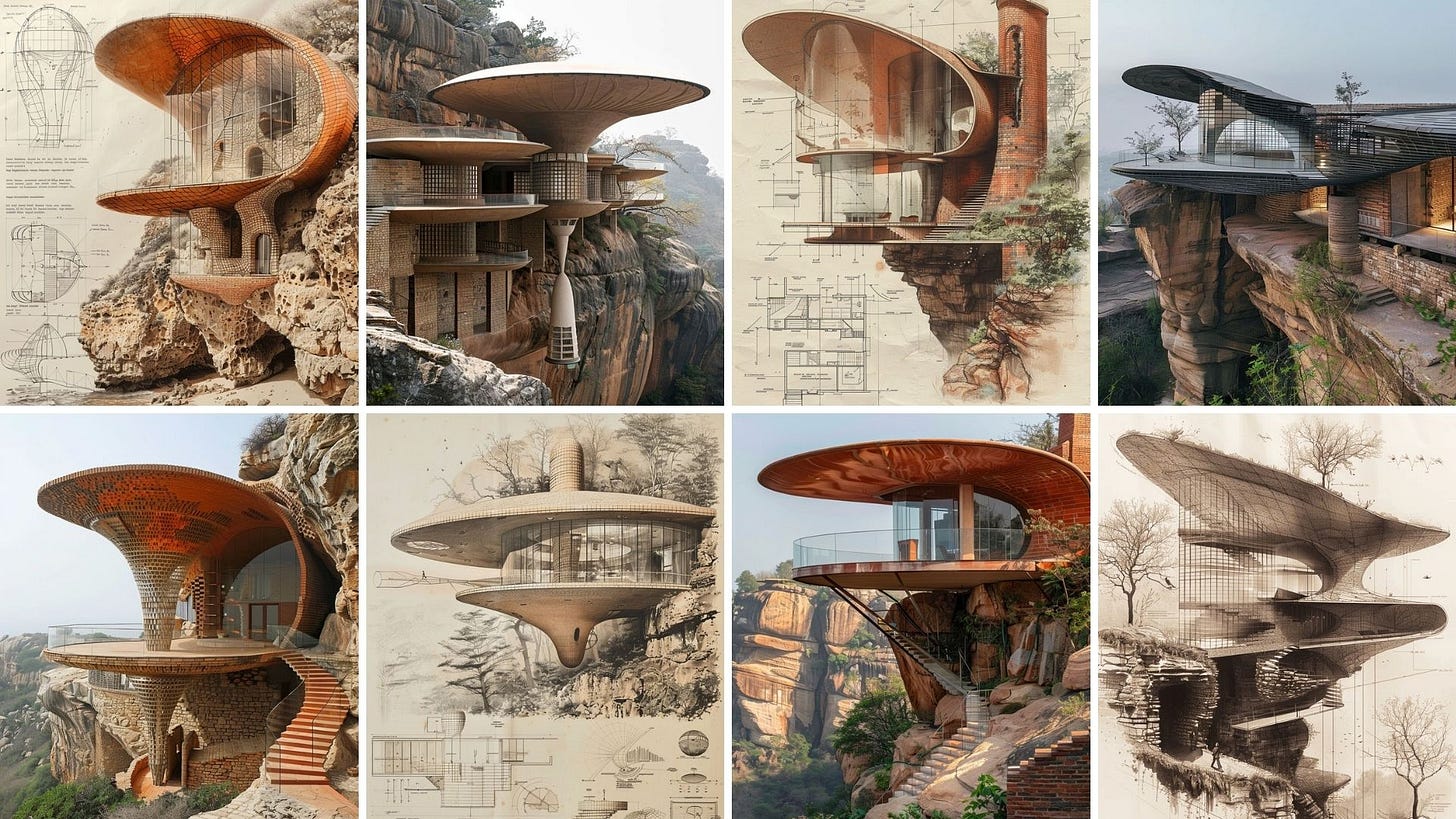Speculative Architecture in the Age of AI
Dreams, Doubts, and Digital Frontiers : Rethinking Futures Through Design and Technology.
When Architecture Becomes a Question
Most people see architecture as an act of solving problems, providing shelter, space, aesthetics, and status. But dig deeper, and you realise architecture is as much about rehearsing futures as it is about shaping the present.
Speculative architecture sits squarely in this rehearsal space. It isn’t about making things more buildable. It’s about asking: what if we built differently, or didn’t build at all? It trades feasibility for friction, inviting uncomfortable dialogues around society, environment, and the narratives we’ve attached to progress.
What is Speculative Fiction?
Speculative fiction builds alternative futures by stretching current realities into what could plausibly unfold. It’s about confronting cultural, ethical, and existential dilemmas through invented worlds. Then take a film like Blade Runner, more than a sci-fi spectacle, it shows a near-future where technology, climate, and humanity collide. For architects, these imagined worlds offer a testing ground: we can explore what kinds of spaces, rituals, or conflicts might emerge, long before we risk building anything permanent. It’s a deeper, safer way to interrogate how people might live, adapt, or resist.
What is Speculative Design? Why Does it Matter?
Anthony Dunne and Fiona Raby opened up design to be less about solving client problems and more about questioning the world itself. They moved the conversation from what is likely, to what is possible, to what we might actually want as a society. It’s also about designing for speculative futures—testing ideas not because we plan to build them next year, but because it challenges us to see what the future might look like, who benefits, who gets ignored, and who could pay the price.
AI: Shifting the Landscape of Speculation
At RBDSai Lab, we’ve been exploring Speculative Friction, where imagination meets environmental urgency, tradition meets computational logic, and technology becomes a bridge, not a spectacle.
Our speculative design process, powered by AI, rests on three layers:
LLMs for Provocation: Not drafting polite concepts, but stirring ethical conflicts, absurd briefs, and narrative worlds that reveal our deeper values.
Diffusion for Atmosphere: Not just pretty facades, but haunting, ambiguous, sometimes contradictory images that force us to reconsider what buildings should signify.
Iterative Dialogue: Each output—text or image—loops back into the system. It’s less design and more dialectic. Less perfecting, more probing.
In this way, AI isn’t automating imagination; it’s exposing it, making our collective hopes and anxieties starkly visible.
What Makes This Architecture Speculative?
Traditional architecture tends to orbit the probable: what the budget, site, or market wants. Speculative architecture orbits the possible — or even the preferable. It’s a deliberate departure from building for certainty.
It externalises the anxieties society would rather suppress.
It tests moral or ecological limits in hypothetical space, rather than with concrete and steel.
It positions architecture as an argument, a counterfactual, not merely an artefact.
Far from naive, this practice is rigorous precisely because it courts absurdity. It plays out scenarios to see which futures collapse under their own contradictions — and which might actually be worth pursuing.
Why Design Needs Speculation More Than Ever
Speculative architecture acts as a cultural safety valve. It pushes us past what’s marketable or code-friendly. It matters because it:
Opens futures we might otherwise shut down.
Breaks stale patterns
Becomes an ethical lab where we test values before building them into streets.
Frames design as civic dialogue, not just a professional output.
Why Are We Even Building?
In our practice, we constantly ask: Why build at all? It isn’t cynicism. It’s about ensuring when we do build, it’s grounded in presence, consequence, and human stakes, not just permanence or novelty. We unpack this in depth on this podcast with Rishabh. Architecture schools are already seeing students pivot from pure construction toward critical environments, adaptive reuse, and ephemeral installations. There’s a generational pivot from permanence to presence.
Speculation nurtures this, making architecture about consciousness, context, and consequence, not just about newness or the false eternity of concrete.
Looking Ahead Together
Speculative architecture doesn’t abandon practice; it enlarges it. In an era where AI can churn out endless seductive images, our real mandate is to decide which questions are worth sketching in the first place.
Subscribe to our newsletter for deeper dives into how AI, design, and philosophy intersect, and to stay part of a conversation that doesn’t just imagine new forms, but interrogates why we’d want them at all.
I’m Sahil Tanveer of the RBDSai Lab, signing off for the week. I promote, consult, and apply AI for Architects along with my Architecture and Design Studio, RBDS. If you liked this Substack,
You will love my book, DELIRIOUS ARCHITECTURE: Midjourney for Architects. It is a 330-page hardcover showcasing the potential of AI in Architectural Design. It is available on Amazon worldwide.
You can bend your minds with our WhatsApp channel AI IN ARCHITECTURE where we talk about AI and its impact on us and the built environment.
You can consult with us on AI for your architecture studio. We have multiple levels of learning and integration, from a Beginners session to the AIMM Assessment and beyond. Get in touch with us at sahil@rbdsailab.com or check out our page www.rbdsailab.com
I’m talking about AI. Our team is set to visit key cities of India for architectural conferences, Podcasts and exclusive student interactions at architecture schools. We’d love to come over for an engaging meetup, hands-on workshop, or a creative collab. Enquiries to sahil@rbdsailab.com










